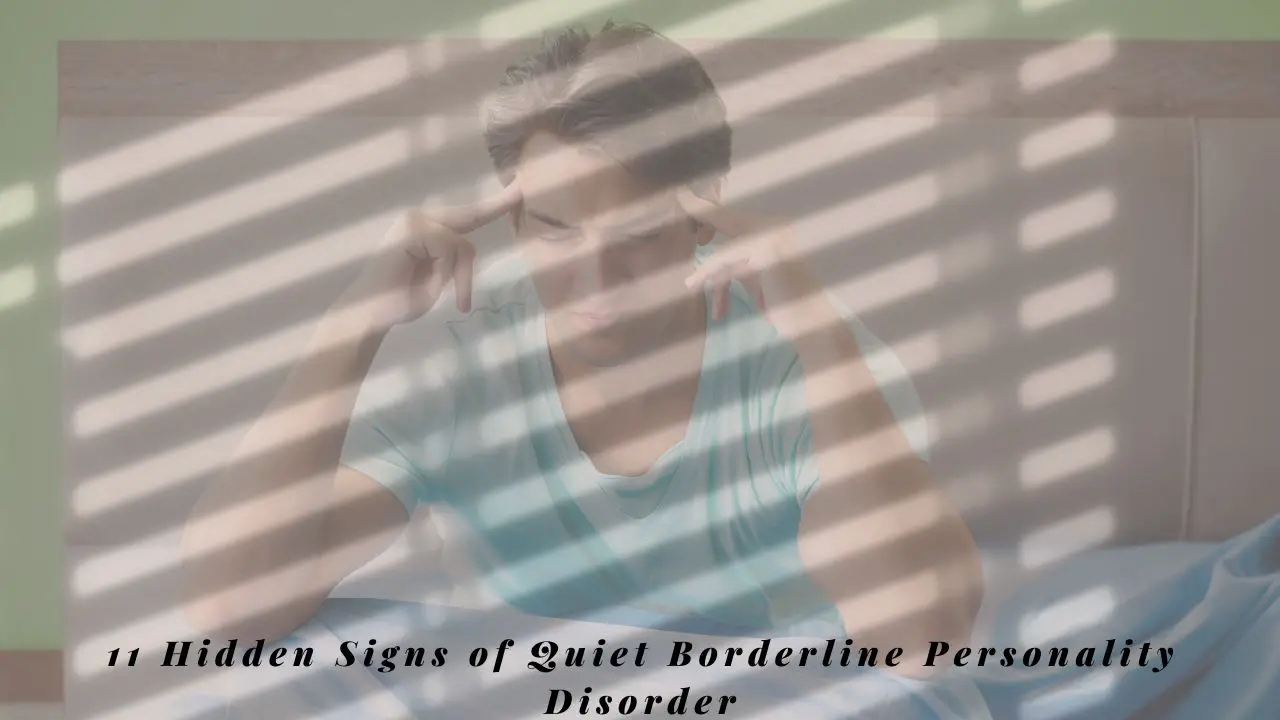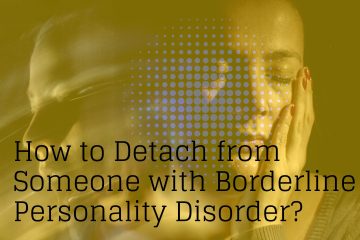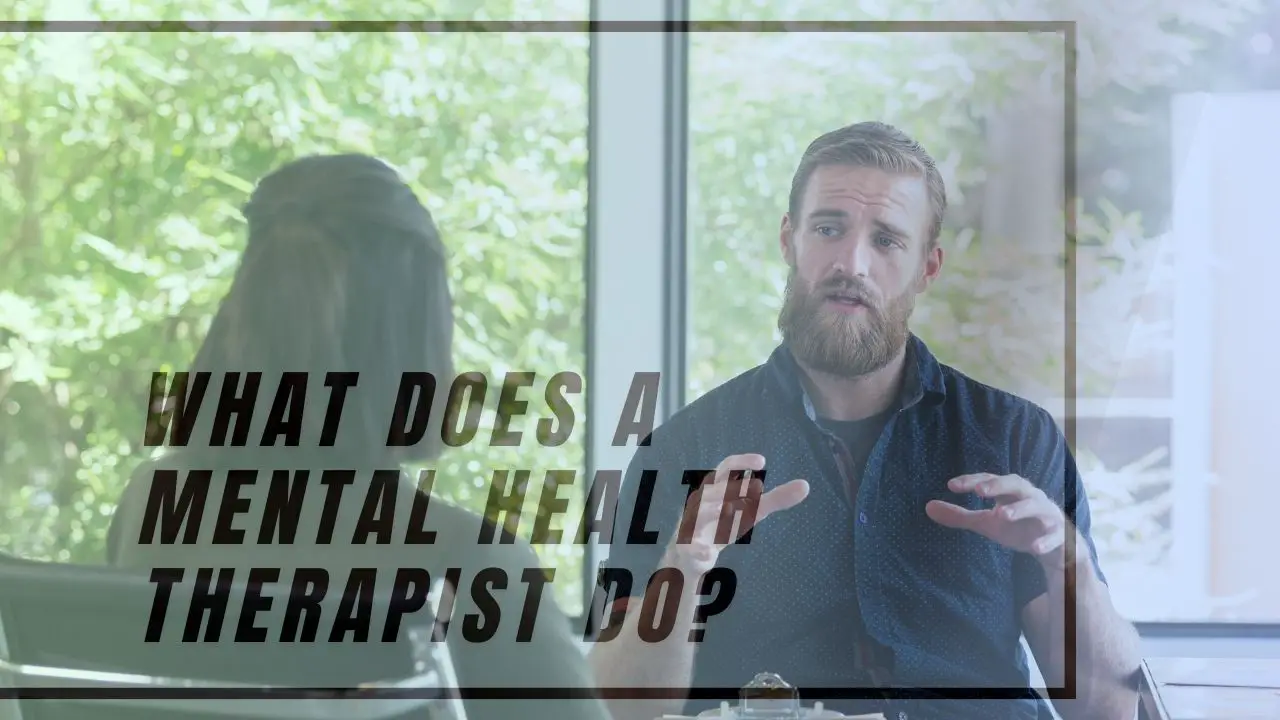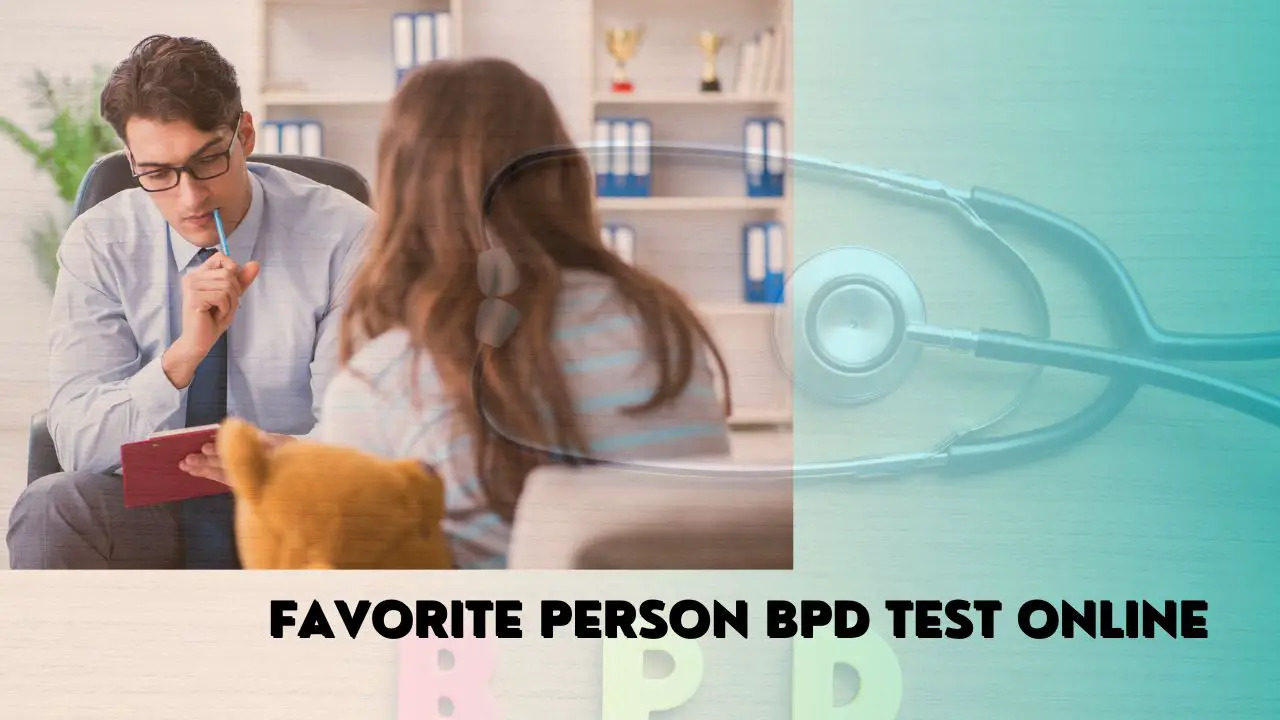Borderline Personality Disorder (BPD) is a mental health condition characterized by challenges in effectively managing one’s emotions, often leading to tumultuous and unstable interpersonal relationships. The following are the nine primary symptoms of BPD, as outlined in the Diagnostic and Statistical Manual (DSM-5). Diagnosis of BPD generally requires the presence of at least five out of these nine criteria. Let’s uncover 11 hidden signs of Quiet Borderline Personality Disorder!
Borderline Personality Disorder Symptoms:
- Fear of Abandonment: Engaging in frantic efforts to avoid perceived abandonment, whether real or imagined.
- Unstable Relationships: Displaying a recurrent pattern of unstable relationships, often involving idealization and devaluation of individuals, referred to as black and white thinking or “splitting.”
- Unstable Self-Image: Struggling with an inconsistent self-image or sense of identity.
- Impulsive Behavior: Participating in risky or impulsive behaviors.
- Suicidal Thoughts and Self-Harm: Frequent thoughts of suicide or engaging in self-harming behaviors.
- Emotional Intensity: Experiencing frequent mood swings or periods of intense emotional turmoil.
- Feelings of Emptiness: Chronic feelings of emptiness that are difficult to alleviate.
- Anger Issues: Dealing with uncontrollable or intense anger.
- Dissociation: Experiencing dissociative episodes or feeling disconnected from oneself, sometimes described as an “out of body” sensation.
While Borderline Personality Disorder is commonly associated with outwardly volatile manifestations of these distressing symptoms, it’s important to note that individuals with BPD can exhibit varied expressions of these traits. Not everyone experiences BPD in the same way, highlighting the complex and nuanced nature of the disorder. 11 Hidden Signs of Quiet Borderline Personality Disorder” sheds light on lesser-known aspects of this condition.
What Is ‘Quiet’ Borderline Personality Disorder (BPD)?
“Quiet” Borderline Personality Disorder, often referred to as “hidden” BPD, characterizes individuals who exhibit less overt signs of BPD symptoms. Although not an officially recognized diagnosis, the term “quiet” BPD is used to describe those with BPD who do not openly display their symptoms. Instead, they may channel their experiences in more subtle ways.
READ MORE: What Differentiates People with Obsessive-Compulsive Disorder (OCD) from Those Who don’t have OCD?
For instance, an individual with quiet BPD might encounter the same intensity of uncontrollable anger as someone with more “typical” BPD, yet rather than externalizing this anger, they might direct it inwardly through persistent negative self-dialogue or concealed self-harming behaviors.
Matthew Gemma Karamozov explored this concept in his article titled “When You Don’t Fit the ‘Classic’ Definition of Borderline Personality Disorder.”
Borderline Personality Disorder (BPD) is commonly associated with outward expressions of emotional turmoil and impulsivity, fitting the “classical” definition of someone who “acts out.” However, as with any disorder, BPD presents itself in various forms.
So, what characterizes the concept of the “quiet” borderline? This refers to individuals who internalize their emotions rather than expressing them outwardly. They grapple with a range of intense emotions, including fear of abandonment, mood swings, anxiety, self-destructive tendencies, impulsiveness, suicidal thoughts, and black-and-white thinking (splitting).
The distinctive aspect of being a “quiet” borderline is that these emotions are primarily directed inwardly, leading to self-directed actions. Through personal narratives, the article “11 Hidden Signs of Quiet Borderline Personality Disorder” offers insight into the complex emotions and behaviors associated with quiet BPD.
BPD doesn’t always manifest in the visible ways we might expect, which is why it’s important to shed light on the experiences of individuals with “quiet” BPD. The lack of outward display doesn’t diminish the pain of living with the condition. To better understand the “hidden signs” of quiet BPD, members of the Mighty BPD community were asked to share one often-overlooked indicator.
The essence of “quiet” BPD is its internalized nature, where the emotional struggles are felt deeply within, even though they may not be readily apparent to others. By acknowledging these hidden signs, the “11 Hidden Signs of Quiet Borderline Personality Disorder” article acknowledges the genuine struggles faced by those with quiet BPD.
Here’s what members of our community shared with us:
1. Self-Blame
Due to heightened emotional sensitivity often seen in individuals with BPD, feelings such as guilt are experienced with great intensity. Consequently, this can result in persistent self-blame becoming a common occurrence.
“I frequently find myself attributing blame to myself for various matters, even when I am not responsible. Additionally, I often harbor thoughts that my friends would be better off without me. I tend to believe that I am a source of annoyance or burden to them, to the point where I might be considered too troublesome to engage with.” — Prue I.
2. Mentally Retreating
When faced with triggers, it’s a natural response to withdraw inwardly as a means of self-protection. If this is a challenge you frequently grapple with, it’s important to recognize that you’re not alone in experiencing this.
“Engaging in mental retreat and sensing myself descend into a negative spiral is a familiar experience, all the while managing to project a positive outward demeanor. Despite this internal shift, no one seems to detect the change. Balancing the challenges of depression, anxiety, and BPD, I often appear as though I’m ‘doing better,’ yet this reflects my adeptness at concealing the inner struggles I face.” — Shana S.
These experiences highlight the nuanced and often hidden aspects of “quiet” Borderline Personality Disorder, where internal struggles and emotions can be intense, even though they might not be immediately observable to others.
3. ‘Beating Yourself Up’
Negative self-talk is a common experience for those with quiet BPD, often stemming from the inward-directed anger associated with the condition.
- Haley F. described, “I internally attack myself. Like a wolf attacking its prey, my mind rips me to shreds.”
- Shawna H. shared, “I replay all of the day’s conversations and beat myself up for them. I never answer well enough or I said something that made me look ‘stupid’.”
4. Being a People Pleaser
People-pleasing, a response frequently linked to trauma, is prevalent among individuals with BPD, who often have a history of trauma. This behavior can stem from an intense attachment to others and a desire to be liked.
Kimberly B. stated, “I get attached to someone almost immediately and I spend 90 percent of my day trying to make them like me. If I think they are a little mad at me or dislike me, then my world crumbles and I feel like the worst human being alive.”
5. Being Afraid of Emotional Intimacy
The fear of abandonment can lead individuals with quiet BPD to distance themselves from relationships, depriving them of valuable support. Therapists specializing in relationships can help address these fears.
M.L. revealed, “Most people wouldn’t consider [I have] borderline just because I never get that far in the relationship where they can see me truly… I’m constantly working with my breathing when I’m around people without getting noticed.”
6. Dissociation
As per information provided by Mental Health America (MHA), dissociation is a psychological occurrence where an individual becomes detached from their current surroundings, thoughts, memories, and even their sense of self. This phenomenon exists along a continuum ranging from mild to severe manifestations. Dissociation is frequently observed in individuals who have undergone traumatic experiences.
“If my husband and I had an argument, I’d start shutting down and experiencing dissociation. I’d mentally disconnect because, in my perception, it became a situation of ‘Oh god, I must have been wrong, and he might leave me. I should stay quiet to avoid making it worse.’ I would spend hours within myself, rehashing why I wasn’t measuring up… Fortunately, my husband is understanding. He recognizes that when I’m in that state, it’s not me giving him the silent treatment. It’s more about me not being fully present. He helps guide me back to reality and grounds me.” — Aspen A.
7. Experiencing Internal Rage
Uncontrollable anger is among the nine well-known symptoms of BPD, and individuals with quiet BPD can also grapple with this emotion. While they might not express their anger outwardly, the intensity of the emotion can be overwhelming and challenging to manage.
“Internal rage and a racing mind. The things that go through my head are so distorted and it leaves me trembling inside some days.” — Michaela S.
8. Fear of Abandonment
One of the key indicators of BPD is the intense fear of abandonment, which is prevalent in nearly all individuals diagnosed with the condition. If this fear significantly impacts your daily life and relationships, you might find value in exploring the “Wise Mind” technique, a skill derived from dialectical behavior therapy (DBT) that is often recommended for individuals dealing with BPD.
“The fear I experience isn’t the usual concern about being alone. Instead, it’s a continuous worry that I’ll end up driving people away.” — Amanda M.
9. Self-Sabotage
Self-sabotage, which involves intentionally undermining one’s own progress or objectives, is often observed in individuals with BPD, particularly when they contend with inclinations toward self-harm. If this resonates with you, it’s important to know that you’re not alone. We recommend sharing your experiences on The Mighty using the hashtag…
“I’m adept at self-sabotage, whether I’m aware of it or not. It often feels like a constant internal struggle of ‘me against me.’.” — Mi C.
10. Feeling Suicidal or Wanting to Self-Harm After Social Interactions
An especially prominent aspect of BPD is the presence of unstable and tumultuous interpersonal relationships. For individuals with quiet BPD, instances of social rejection or disappointment can trigger distressing internal responses, such as suicidal thoughts or the tendency to engage in self-harming behaviors.
“I get set off and then just get mad at myself for it. Like I will get triggered, and instead of dealing with whatever my problem is, I just take that as a last straw and I just release the flood gates of emotion in my head. I’ll go from there to hating myself to whatnot and ultimately end up with suicidal ideation. Even when I don’t feel particularly suicidal.” — Alyssa D.
11. Shutting Down
In the characteristic manner of “quiet” BPD, individuals with this form of the condition tend to internalize their emotions and shut down, as opposed to outwardly expressing or lashing out.
“I tend to shut down instead of erupting in anger. This inclination to internalize my emotions has been a part of me since childhood, making it particularly challenging for me to vocalize or openly express my feelings.” — Cecilia C.
Conclusion
In conclusion, the exploration of “11 Hidden Signs of Quiet Borderline Personality Disorder” has provided a comprehensive glimpse into the often-overlooked facets of this complex condition. By delving into these concealed aspects, we gain a deeper understanding of the unique challenges faced by individuals with quiet BPD.
Through personal stories and shared experiences, this article has shed light on the internal battles of self-blame, emotional retreat, and intense feelings that characterize quiet BPD. By acknowledging these hidden signs, we acknowledge the strength and resilience it takes to navigate this form of the disorder.
It is our hope that this article sparks empathy and support for those who navigate the intricate terrain of quiet Borderline Personality Disorder, emphasizing that every manifestation of the disorder is valid and deserving of understanding.



